Throughout the past decade, a topic that's been impossible to avoid in the world of nutrition is the keto diet. As its popularity has surged, its use has successfully rescued many dieters from metabolic distress and dysfunction.
Throughout this time, keto diet supplements have also gained popularity, led by exogenous ketone salts. These supplements provide users with a powerful alternative to carbohydrates, a new fuel source for the body.

This article clears up the confusion in the keto diet supplement space. All along behind the scenes, NNB Nutrition has been innovating the BHB salt manufacturing process, and is the sole producer of goBHB, licensed by Axcess Global for their company Real Ketones
As with any new technology, the ketone supplement landscape has been confusing, even to industry insiders. There are numerous researchers, companies, brands, trademarks, and patents involved, and the industry is extremely fluid.
NNB Nutrition: The Brains Behind goBHB Manufacturing
At the heart of it all, however, is one company that's been manufacturing the vast majority of ketone ingredients: NNB Nutrition. Over the years, NNB has innovated their ketone supplement production process numerous times and are the sole manufacturer of the popular ingredients in goBHB.
This article serves to clear up the confusion in the keto supplement industry. We delve into the backstory of keto diets and keto supplements and describe NNB Nutrition's innovative improvements. Finally, we discuss related patents and the popular goBHB trademark, which is actually owned by the company behind the brand Real Ketones.
Before we get started, though, be sure to sign up for our goBHB and NNB Nutrition news updates so that you can receive notifications when we cover new research on these fascinating ketone supplements:
Subscribe to PricePlow's Newsletter and Alerts on These Topics
What Are Ketones?
Under normal circumstances in Western society, people following a high-carbohydrate "standard American diet" are largely dependent upon glucose for metabolic energy. This is especially true for the brain, which represents just ~2% of our body weight but consumes 20 to 25% of the body's glucose-derived energy.[1,2]
Human diets weren't always like this, and before the advent of modern agricultural practices, carbohydrates weren't abundant year-round in most geographic areas. Without the easy availability of carbohydrates (or sometimes any food in general), the metabolism was forced to adapt to another energy source: fat (often the individual's own body fat).
When "burning" body fat in a process known as beta-oxidation, the body generates an alternative energy source known as ketone bodies.[3] These energy sources can be used by every cell in the body to satisfy its energy needs -- including the brain.[4]
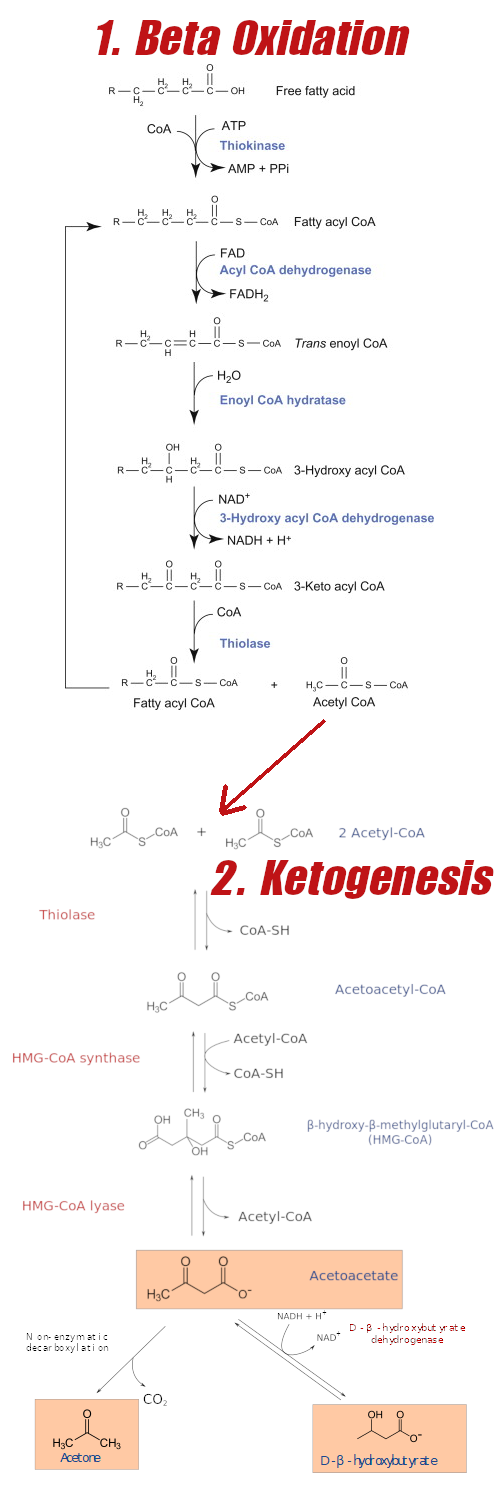
Beta Oxidation of fatty acids leading to Ketogenesis, generating the three main ketone bodies (highlighted). D-BHB is the primary ketone made that the body can use as an energy substrate. We can add more D-BHB for various reasons, since this fat burning process is slower and you may wish to have some BHB available immediately for more energy.
There are three types of ketone bodies:
- Beta-hydroxybutyrate
- Acetoacetate
- Acetone
These molecules are primarily produced in the liver mitochondria[5] and used by the body in times of prolonged fasting, extreme exercise that depletes glycogen stores, and/or very low carbohydrate consumption.[6-8] This is known as entering a state of nutritional ketosis -- and the fat that gets beta-oxidized into ketone bodies can either come from dietary sources or body fat.
The keto diet: burning fat and producing ketones endogenously
The keto diet -- short for ketogenic diet -- takes advantage of this mechanism of generating ketone bodies from fat through extreme restriction of dietary carbohydrates (and often employing fasting). It exploded in popularity in the 2010s, and has been very successfully used for weight loss,[9-11] normalization of blood sugar and insulin,[12,13] improvements to metabolic and lipid markers,[14-16] improvements to liver disease,[17] and far more.[18-21]
For instance, a study published in 2008 showed that a phenomenal 95% of dieters with type 2 diabetes were able to reduce or discontinue their medication within six months of ketogenic dieting.[22] The famous two-year long Virta Health study produced similarly impressive results.[23-25]
Over time, ketogenic dieters have greater energy expenditure than their "sugar-burning" counterparts,[26,27] and the diet also reduces more visceral fat,[28] a type of body fat surrounding organs that is harmful in excess.
While this may have seemed like a "new" strategy circa year 2000, fasting and ketogenic diets have actually been practiced for millennia.[29] The diet was widely used in the 1920s for some medical conditions until it was suppressed in the 1970s.
Is it the elevation of ketones or the reduction of glucose and insulin?
A question that often arises is whether the ketogenic's incredible successes are due to the therapeutic nature of ketones or the reduction of the damaging effects of hyperglycemia and hyperinsulinemia. The most likely answer is quite a bit of both.
So naturally, dieters and scientists began to wonder what would happen if we were to give more ketones to the body.
The Use of Exogenous Ketones
While the keto diet was gaining popularity in the 2010s, new categories of keto diet supplements were brought to the market. The most prominent of these involved using exogenous ketones to elevate blood ketone levels. These supplements generally employed various beta-hydroxybutyrate salts, with the BHB molecule bound to a mineral, such as sodium, calcium, magnesium, or potassium.
These exogenous ketones were generally marketed by supplement brands -- some more responsibly than others -- to support various functions:
- Increase energy
- Easy transition into nutritional ketosis
- Improve cognition
- Painless weight loss
- Reduce appetite
- Greater athletic performance and endurance
- Improve electrolyte balance
- Elevate ketone levels
MCT oil, made of medium-chain triglycerides, was also marketed for similar purposes.
However, at the time, not all of the above claims were supported by scientific evidence in humans. With that said, many dieters could anecdotally feel incredible effects from the use of exogenous ketones.
Behind the scenes, researchers have been exploring the use of exogenous ketones in both humans and animals, and the effects are extraordinarily exciting.
Promisingly, exogenous ketones have been shown to be beneficial to both ketogenic dieters and higher-carbohydrate dieters. Although they were originally marketed to low-carb/keto dieters, we're beginning to see that this was severely limiting their potential user base and use cases.
Benefits of Exogenous Ketones
Early animal research in the 1990s showed that exogenous ketone bodies could spare glucose, improve fueling during exercise, reduce lactate production, and improve overall performance.[30] Adding ketones provides an alternative fuel source, especially when glycogen runs out.
This is the starting point in the line of thinking that ketones can be used for greater athletic performance, especially for endurance. However, as we'll see, research in non-athletic health outcomes is even more promising.
-
Ketones and athletics
A handful of studies have been conducted testing the athletic use of exogenous ketones. In general, they don't generally improve anaerobic performance (such as in sprints),[31,32] but do show great promise for endurance sports,[33] lowering lactate levels[34] and improving cognitive performance after exhaustion.[32]
More research is needed, but endurance athletes who are already keto-adapted seem to fare best with exogenous ketones, while high-carbohydrate athletes can improve cognitive parameters when co-ingesting ketones with their standard carbohydrate regimen.
-
Reduced appetite
One study showed that exogenous ketones lowered appetite, insulin, and "hunger hormones" ghrelin, GLP-1, and PYY.[35] The researchers confirmed what many ketone supplement users have anecdotally claimed for years — they seem to reduce the desire to eat. This is especially useful during times of stress (more on this below) or toward the end of a fast.
-
Weight loss effects?
Fans of BBH salts will also want to learn about MCT Oil, or Medium Chain Triglycerides
In terms of weight loss, the research is in preclinical state, but overweight mice that had been on a high-fat diet for 10 weeks had increased energy expenditure and reduced body fat when given exogenous ketones for an additional 12 weeks.[36]
For quite some time, we've predicted that we'd see successful research demonstrating weight loss from BHB supplements, and we're confident that this will be the case. Stay tuned for more information as it comes.
-
Cognition and potential effects against anxiety
Above, we suggest the potential role of supplementing ketones to avoid stress eating. Reason being, two different preclinical studies have shown that exogenous ketones are anxiolytic. In these studies, they reduced anxiety-related behavior in animals.[37,38] One of these studies also showed improved cognitive performance in impaired animals.[37]
Anyone who's ever felt the "carnivore calm" can attest to the reduction of anxiety once they've put an end to the blood-sugar rollercoaster -- something ketones can support as well.
Similar to weight loss, we believe that this is a promising field, and will keep a close eye on upcoming research in humans.
-
Cardiovascular benefits: Improved blood pressure and lipid levels
Another study published in 2017 showed that prolonged use of oral BHB salt supplements led to improved blood lipid profiles and reduced visceral fat mass in rats.[41] Note that we always focus on increases to HDL and decreases to triglyceride levels, a biomarker combination that's far more impactful to cardiovascular outcomes than LDL cholesterol. In that respect, this study was also successful -- higher HDL, lower triglycerides, and lower LDL.[41]
A study published in 2017 showed that various forms of ketone supplements acutely lowered blood glucose, free fatty acid, and triglyceride concentrations.[39] Additional research showed that six weeks of ketone salt supplementation reduced blood pressure in subjects 18 to 35 years old.[40]
Again, this is something we're confident will be demonstrated in humans as well.
Testing a theory that exogenous ketones may help with cardiovascular and renal disease, a team of researchers published a study in 2020 showing that D-BHB is "rapidly metabolized, mostly by the heart and the kidneys."[42]
They concluded the following:
"Beyond brain energy rescue, this opens additional opportunities for therapeutic exploration of D-BHB supplements as a "super fuel" in cardiac and chronic kidney diseases."[42]
However, as we'll see, not all ketone supplements are the same. The study cited above that utilized D-BHB gives us a hint, showing us where ketone technology is going.
This is where scientific innovation -- coupled with NNB Nutrition's manufacturing ingenuity -- has taken exogenous ketone supplements to new heights.
NNB Nutrition: The Innovation of Ketone Supplements
While ketone research and supplement sales picked up steam over the past decade, there were two major business storylines happening behind the scenes:
- Manufacturing, production, and quality control of BHB supplements
- Intellectual property (patents and trademarks)
Someone had to be producing the raw materials for these supplements, after all! And when you have a new ingredient you'd like to bring to market, who better to call than NNB Nutrition?
A novel ingredient manufacturing powerhouse
NNB Nutrition is the world's premier novel dietary supplement ingredient developer and manufacturer. We've covered many of their ingredients over the years, which you can see on our NNB Nutrition news page. A few key ingredients are:
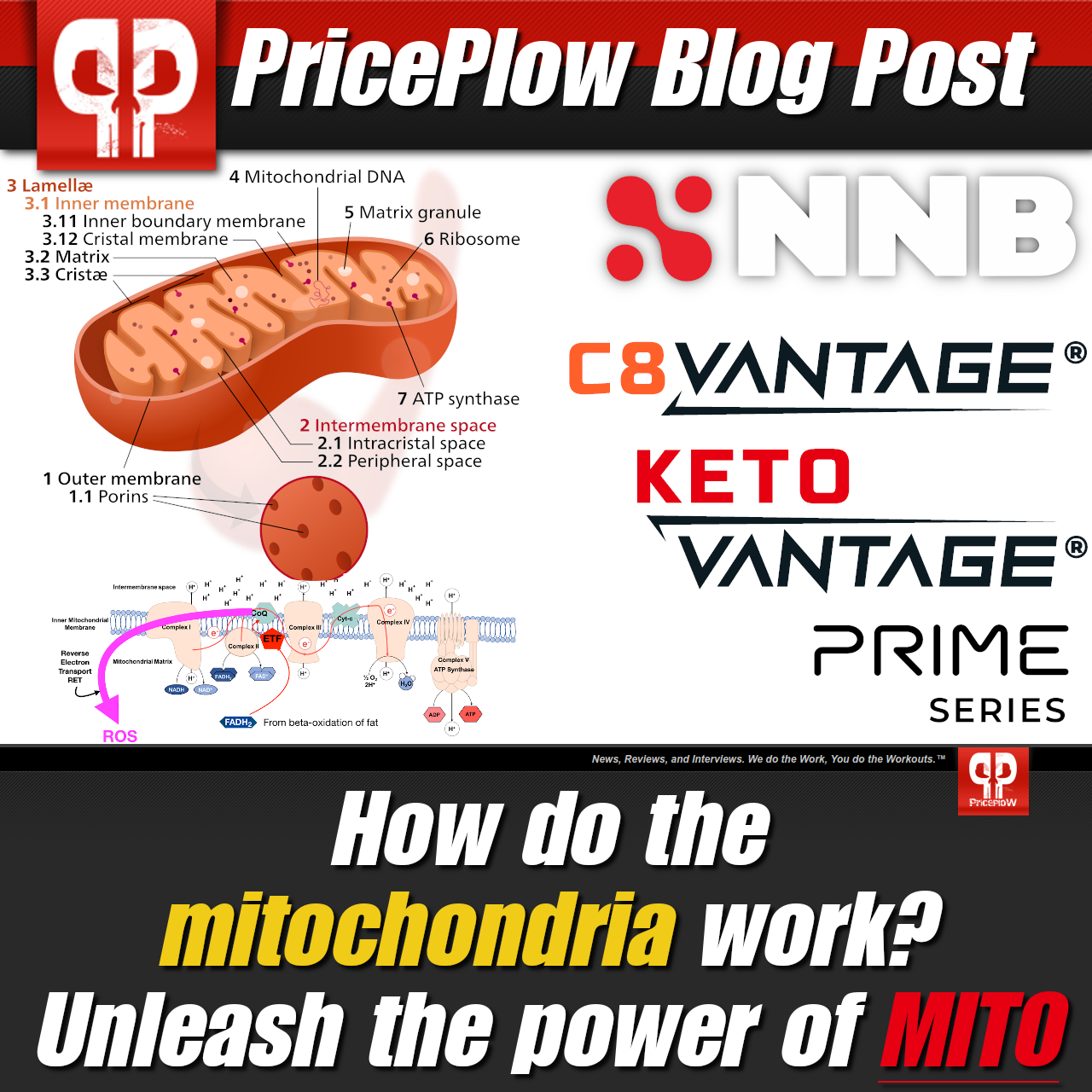
The mitochondria are the powerhouses of our cells. But how do they work, how is our food supply damaging them so badly, and what can we do to fix the issue? Prepare to meet the Power of Mito, presented by NNB Nutrition.
- MitoBurn L-BAIBA - an exercise signaling molecule that promotes greater exercise-based benefits.
- GlucoVantage Dihydroberberine (DHB) - a premier form of berberine to promote glucose disposal and improve insulin sensitivity.
- C8Vantage MCT powder - A highly pure C8 MCT-oil powder that's often used for purposes similar to ketone supplements.
There are others like BioNMN, MitoPrime (L-ergothioneine), and RhodioPrime (high-salidroside Rhodiola extract). The prevailing trend is that NNB Nutrition is focused on applications for clean metabolic energy. Their strategies are discussed in our articles, The Power of "Mito": Optimizing the Mitochondria to Unlock Clean Energy and The NNB Nutrition Story: Supplement Ingredient Solutions for the New Decade.
We've also discussed a program NNB calls "Ingredientology" -- if you have a novel ingredient idea, they'll work with you to bring it to life. That's exactly what happened in the mid-2010s when researchers and scientists were looking for a better way to produce ketone supplements.
NNB Nutrition: The brains behind ketone supply

NNB Nutrition is an innovative ingredient development company with an elite team of over 100 scientists from over 10 countries.
As the ketogenic diet was gaining popularity into 2015, researchers needed quality exogenous ketone supplements to test many of their theories. After approaching several manufacturers, it was clear that NNB Nutrition -- led by industrial chemist Kylin Liao -- was the company that could most reliably produce ketone salts that would remain shelf-stable and pass lab tests.
Most consumers don't know this, but since then, NNB Nutrition has innovated and improved 10 versions of BHB salts. Although we can't show every iteration (some are still yet to enter the market), the general timeline is:
-
2015 - DL-BHB Salts
In response to researchers' needs, NNB created the most trusted form of ketones in the market, originally calling it KetoVantage. This class of BHB salts was also licensed as goBHB, which we'll get into below.
These DL-BHB salts were racemic, meaning they contained both "left-handed" and "right-handed" stereoisomers of the BHB molecules. These were produced through chemical synthesis and bound to minerals such as sodium, calcium, magnesium, and potassium.
-
2016 - D-BHB Salts
As research continued, it became evident that the D-BHB ("right handed") ketone molecules were the ones that were biologically active.[42] Researchers found that L-BHB isn't significantly metabolized into energy and is instead slowly excreted in the urine.[43,44]
D-BHB vs. MCT vs. L-BHB. In the late 2010s, it became clear that D/R-BHB was far superior to L-BHB or mixed racemic D/L-BHB.[42]
In response, NNB found a way to produce only D-BHB salts, allowing for twice the potency (or half the dosage) of the DL-BHB salt counterpart. Similarly, these were produced through chemical synthesis.
-
2017 - D-BHB Salts produced through biosynthesis
Many of NNB Nutrition's best ingredients are enzymatically synthesized, which is a more organic and natural process. The above two versions of BHB salts were chemically synthesized, but NNB is always working to make these compounds in a more natural way.
They upgraded their D-BHB salt manufacturing with a biosynthesis process, which can involve ATP, enzymes, coenzymes, and cofactors as made naturally in the body. This leads to lower risk of unnatural trace components and waste, improving the bioavailability and purity of the resulting ingredient.
-
2018 - D-BHB Free Acid
Some customers didn't want mineral salts attached to all of their BHB, so companies requested BHB-free acids, without the mineral configuration. While these are still quite acidic, they can be combined with a base (such as a BHB salt) to provide a high amount of BHB with a lower mineral load.[45]
NNB Nutrition not only makes the salts, but manufactures the BHB-free acid as well - and in a biosynthesized process as described above.
-
2022 - BHB Gummies and more
NNB is looking at other form factors for ketone supplements as well. Soon you'll be able to use BHB gummies, which is a more ketogenic take on the popular, candy-like form factor. We've recently seen a serious gummy supplement trend and believe BHB could make a great application to offset the carbohydrate load inside.
There are other versions that can't yet be shared, but when it comes to manufacturing ketones, NNB Nutrition has been the brains producing BHB behind the scenes.
goBHB: The premier name in ketones
While NNB Nutrition originally named their ketones KetoVantage, they actually spent most of their time manufacturing the popular BHB supplement ingredient, goBHB. This is a name that nearly all keto dieters and supplement industry followers know, since it is the officially licensed name in BHB salts.
NNB made KetoVantage exclusive to goBHB, which is why you've likely heard of goBHB but not KetoVantage. In terms of manufacturing, however, it was NNB at work all this time.
Real ketones: The licensee of goBHB
The goBHB trademark is now licensed to a company named Axcess Global Sciences.[46] However, you may better recognize their subsidiary company, Real Ketones. Through Axcess Global, Real Ketones is the officially-licensed brand that sells goBHB supplements, with the BHB raw materials manufactured by NNB Nutrition.
Real Ketones has several products, most of which utilize D-BHB salts described above. A few of their key products are:
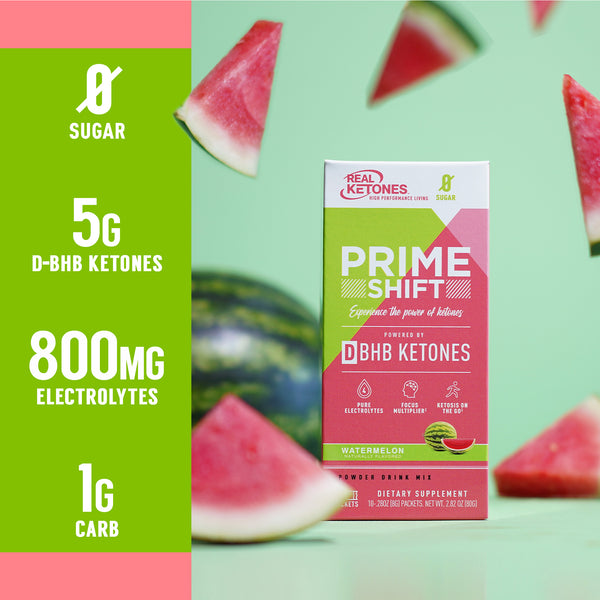
Real Ketones Prime Shift provides 5 grams of highly bioactive D-BHB for quick access to ketones and their benefits
- Keto Lean for Life Prime - A patented combination of C8 MCT and D-BHB salts sold in convenient stick packs.
- Prime Shift - D-BHB ketone powder stick packs that use a blend of magnesium, calcium, sodium, and potassium D-BHB forms.
- Keto Clean Energy - Keto Energy Shots that combine a potassium-heavier D-BHB blend with 150 milligrams of caffeine and Dynamine for energy alongside VASO6 for blood flow and huperzine A for longer-lasting focus.
- Ketone Charged - D-BHB ketones combined with naturally-sourced caffeine in capsule form factor.
There are many other products -- and research studies -- that we hope to cover over time. Axcess Global has also patented (or licensed patents of) several innovations related to exogenous ketones and dieting, some of which were invented by famed researchers like Dominic D'Agostino and Patrick Arnold.[47-58]
To defend these innovations, Axcess Global is supporting more human-based research -- and it's not just for keto dieters -- which we plan to cover over time.
Conclusion: The Future of BHB is Bright
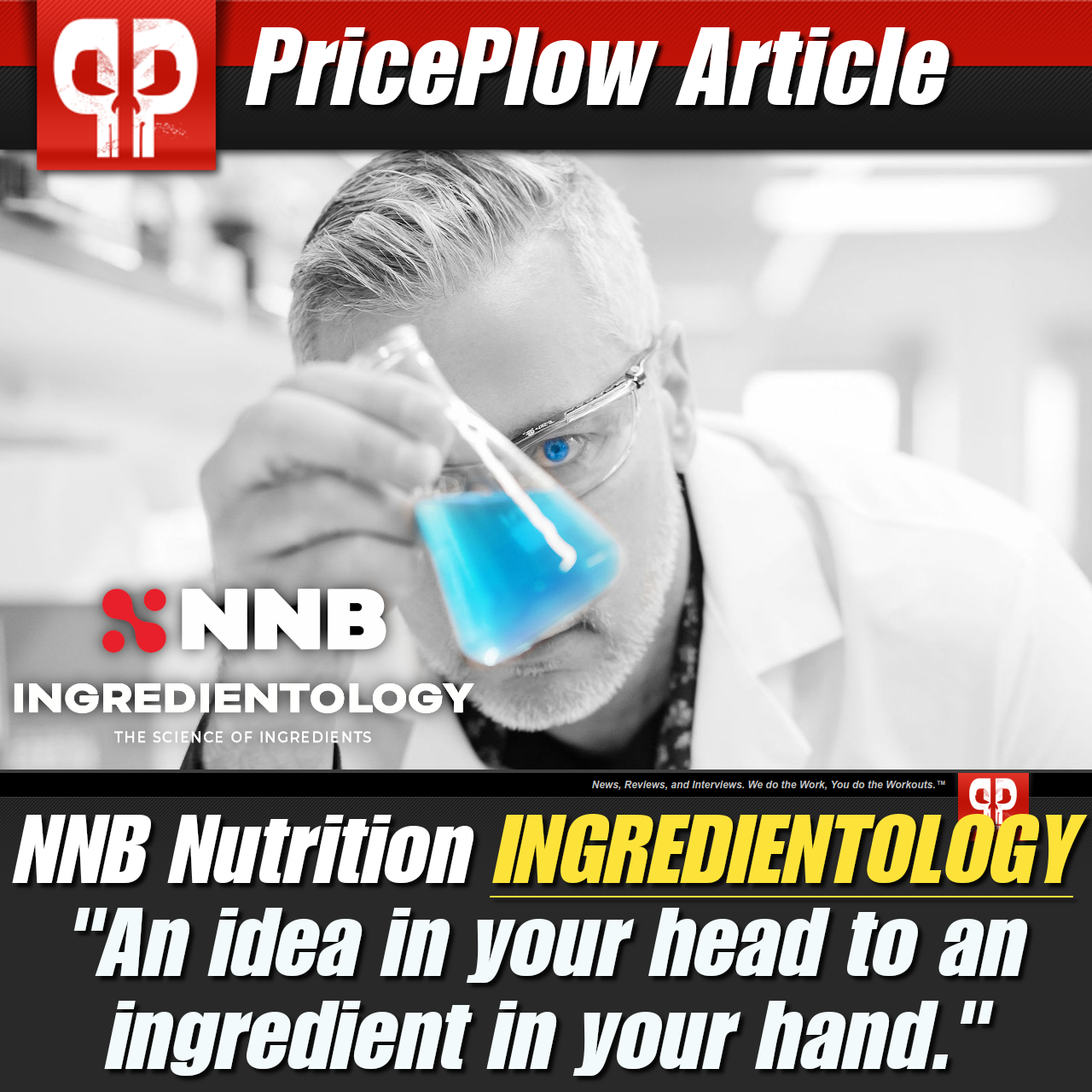
Have an ingredient idea? Team NNB will co-develop it with you! The process is known as Ingredientology.
Even to industry insiders like ourselves, the ketone supplement landscape has been a bit confusing. This is to be expected with any new technology booming with new research every year. We hope this article helped clarify the backstory of these supplements while also illustrating their benefits.
As this decade continues on, we're highly confident that new research will illuminate more benefits of D-BHB in humans -- and they won't just be for low-carb dieters.
We believe that many of the research trials that were performed using acidic (and gut-wrenching) ketone esters -- or less-bioavailable racemic BHB salts -- should also be reconsidered. Only this time, the researchers should use what we now know to be the superior form in goBHB D-BHB salts, in appropriate potassium/sodium ratios.
This is a fascinating area of research, and the products provide support for an exit from a world of metabolic distress caused by the industrialized food supply. Modern problems require modern solutions, and with ingredients like MitoBurn, GlucoVantage, and goBHB, NNB Nutrition is on the front lines of the fight for our metabolic lives.
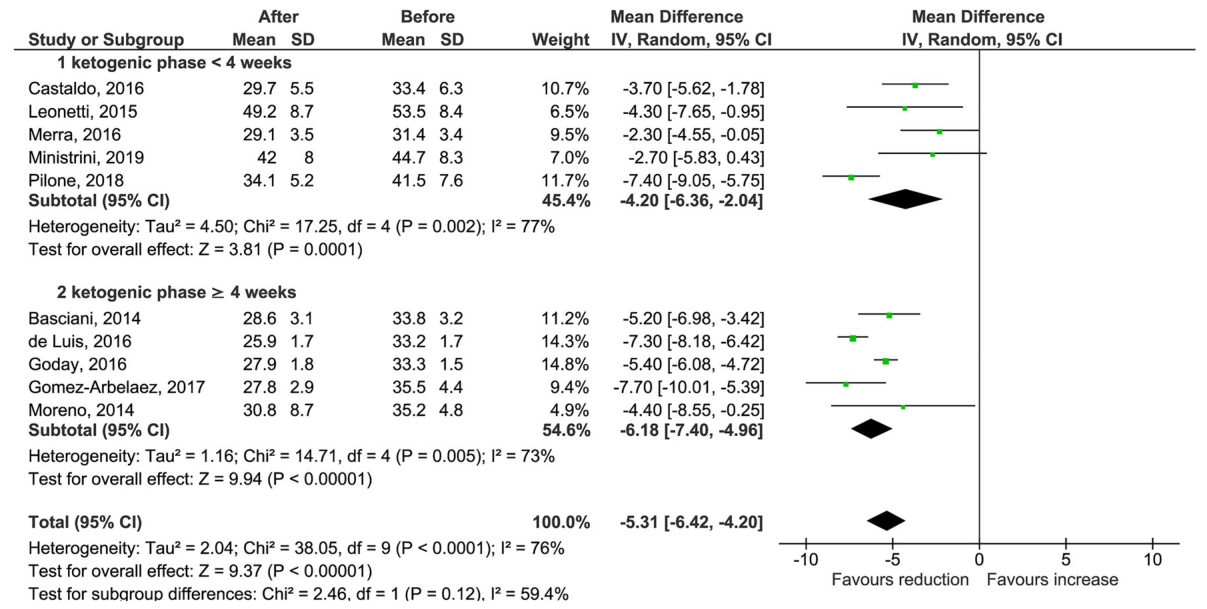
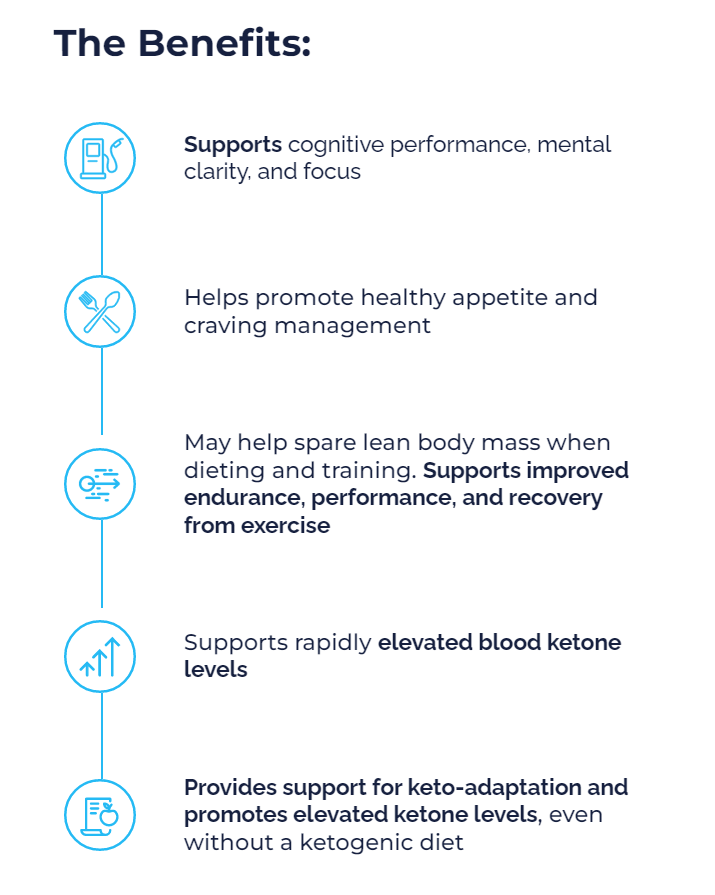

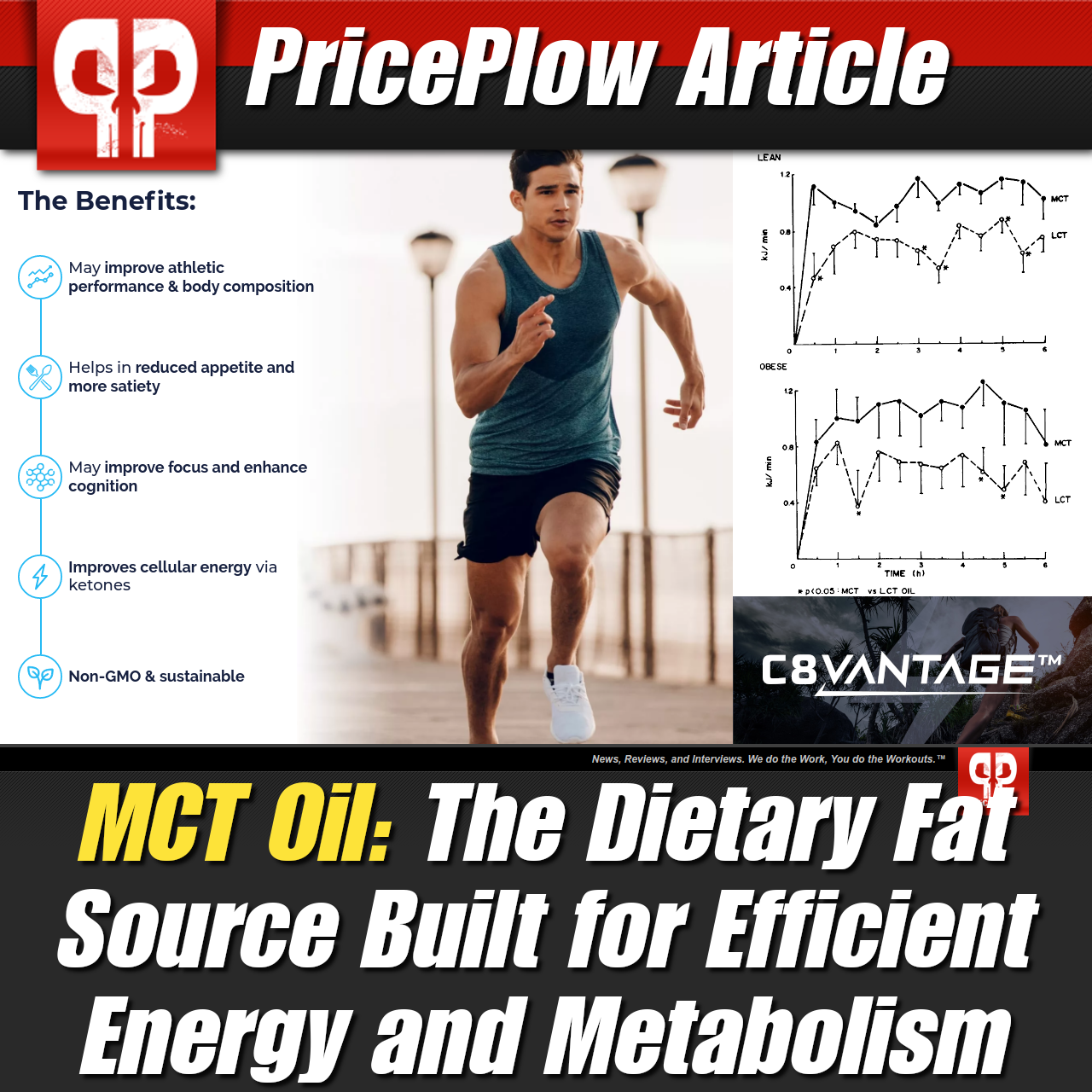


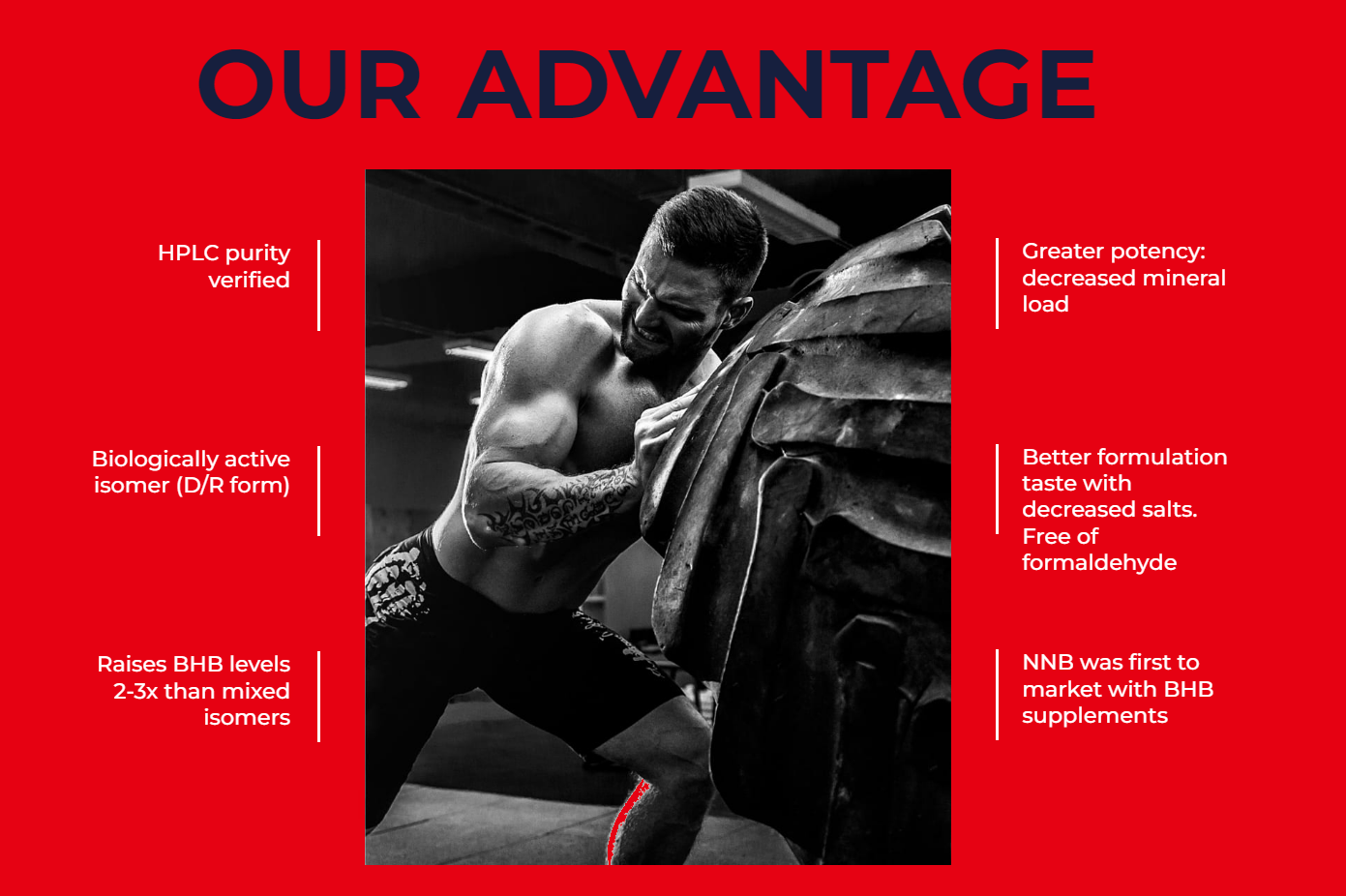
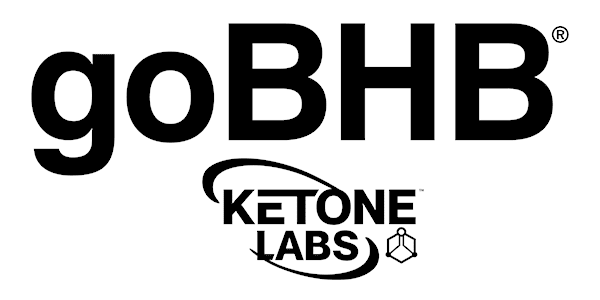


Comments and Discussion (Powered by the PricePlow Forum)